Discover the world of modern and contemporary art from Africa and its diaspora with Pavillon 54's magazine. Engage in enlightening articles, captivating interviews, comprehensive editorial coverage, enriching videos, and stimulating experiences. Join our community to stay informed, learn, and actively participate in the dynamic landscape of African art.
-
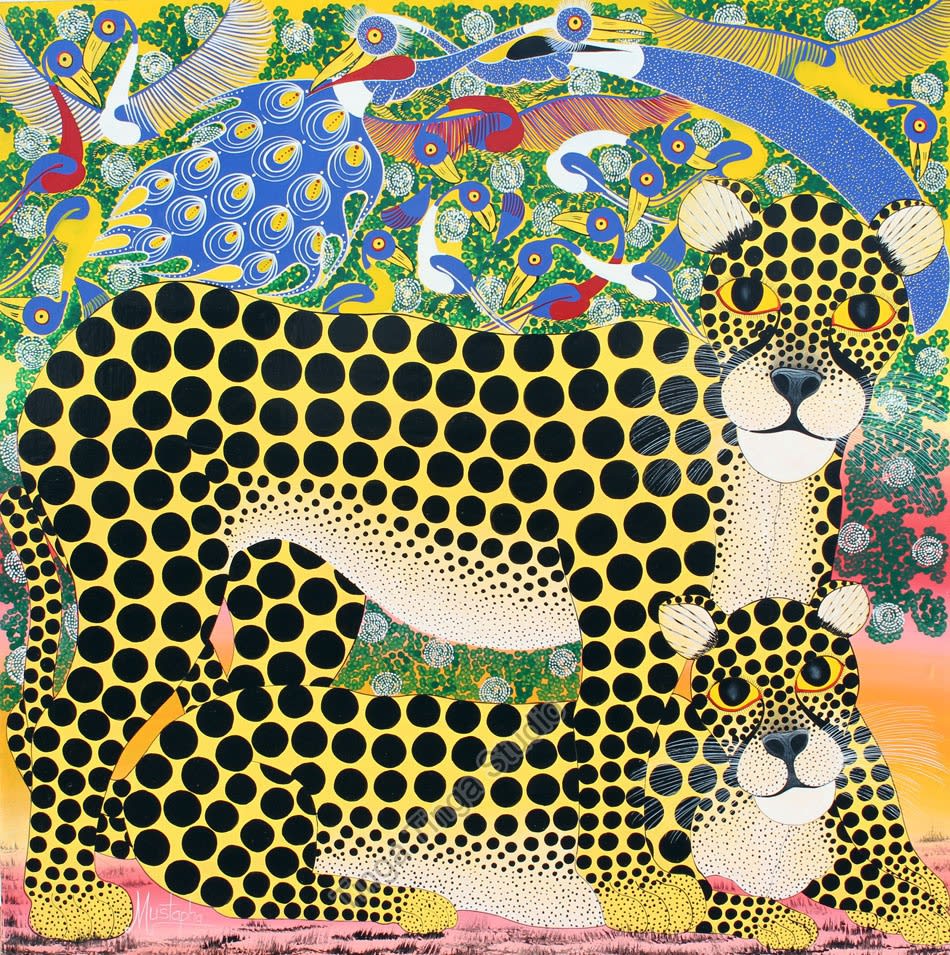
In this article, Pavillon54 explores the world of Tinga Tinga art, a distinct painting style that originated in East Africa, particularly in Tanzania.
-
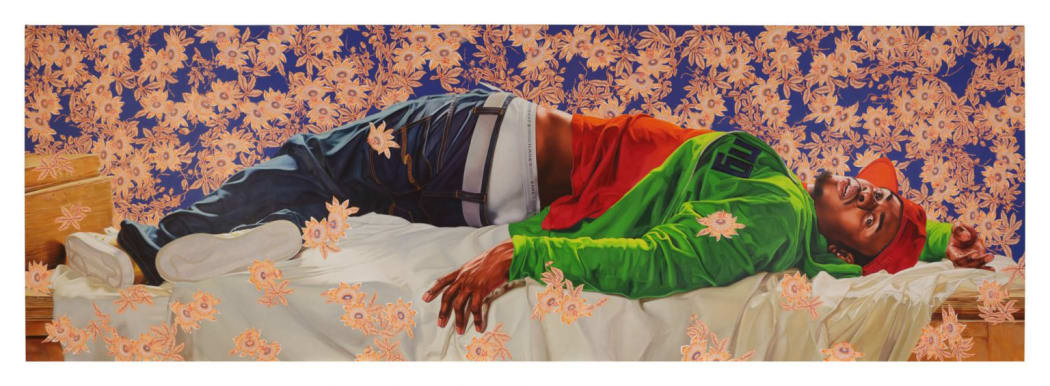 Kehinde Wiley, Femme piquée par un serpent (2008). The Dean Collection of Swizz Beatz and Alicia Keys. © Kehinde Wiley. Photo: Glenn Steigelman.
Kehinde Wiley, Femme piquée par un serpent (2008). The Dean Collection of Swizz Beatz and Alicia Keys. © Kehinde Wiley. Photo: Glenn Steigelman.Black Art Collectors Shaping the Future of Art Investment
How Black Art Collectors Are Influencing The Art Market And SocietyIn the vibrant tapestry of the art world, where every thread represents a unique cultural narrative, black art collectors are emerging as pivotal weavers of change and diversity. The significance of black art collectors transcends mere acquisition; it is a profound act of cultural preservation, identity affirmation, and barrier-breaking in an industry historically dominated by a singular narrative. This article delves into the transformative role of black art collectors, who, through their passion and patronage, are not only redefining the contours of art investment but are also championing the rich diversity of black artistic expression. -
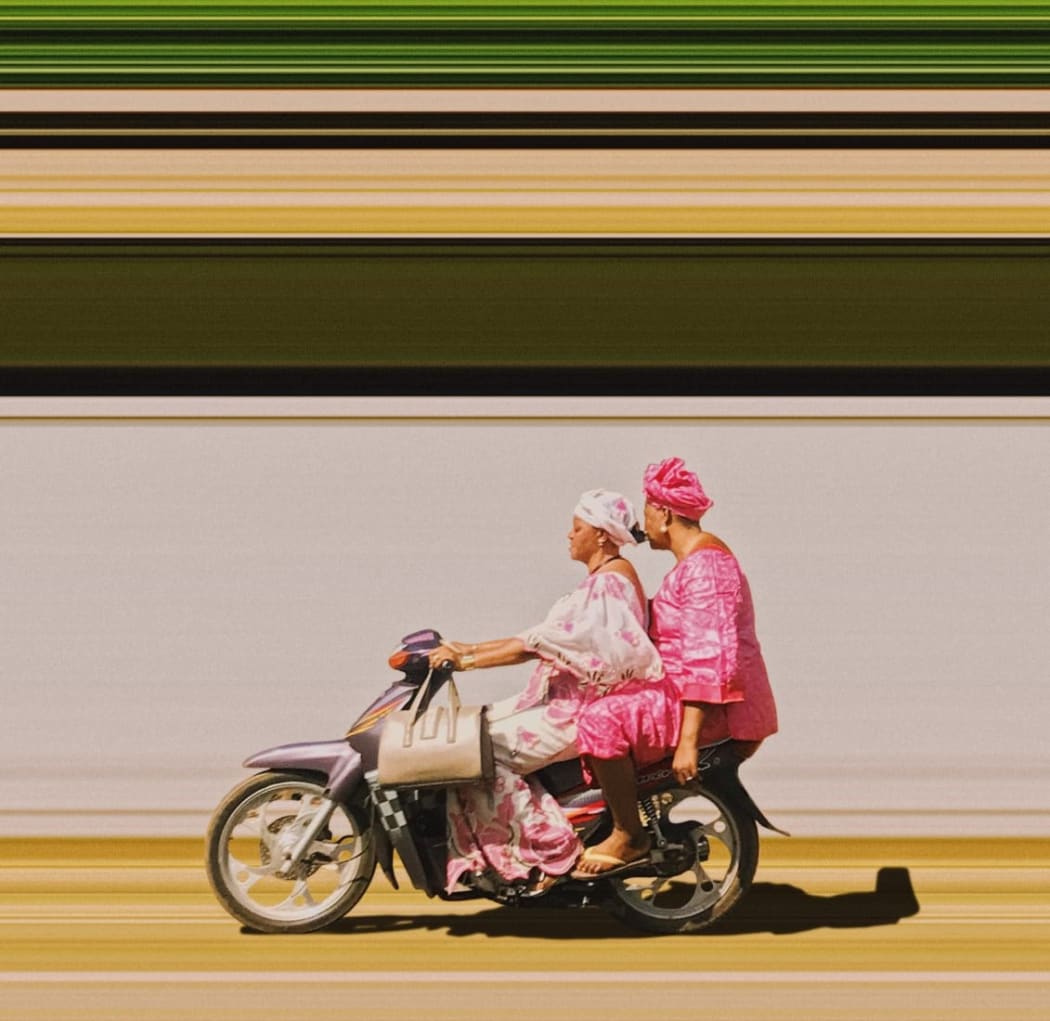 As the art world prepares to rebound to pre-pandemic heights, 2024 promises to be a momentous year with an anticipated surge in exhibitions and art fairs globally. Let’s delve into some of the major art events to anticipate in 2024.
As the art world prepares to rebound to pre-pandemic heights, 2024 promises to be a momentous year with an anticipated surge in exhibitions and art fairs globally. Let’s delve into some of the major art events to anticipate in 2024. -
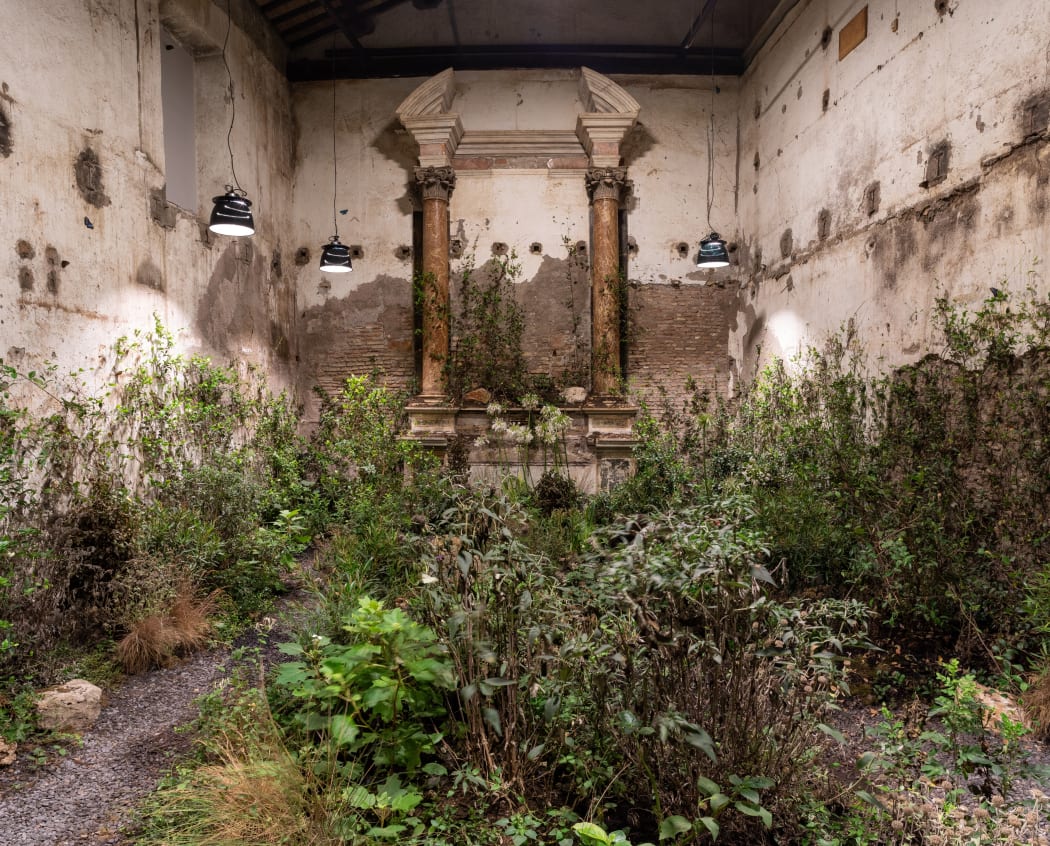
In the investigation of identity and reconciliation of forgotten histories to the present, the concept of a place is significant to the African art narrative. As an active observer of their immediate environment, an artist is in constant dialogue with a place, physical or non-physical.
There’s more emphasis on what the place means to an African artist in their practice, and this exploration could be political, social or metaphysical as they examine identity, culture, history and the complex relationships between people and their environment. From time to time, African artists have reimagined varied immersive spaces to interrogate diverse topics that affect society. In all, they are questioning and redefining the notion of place in the context of a rapidly changing world.
-
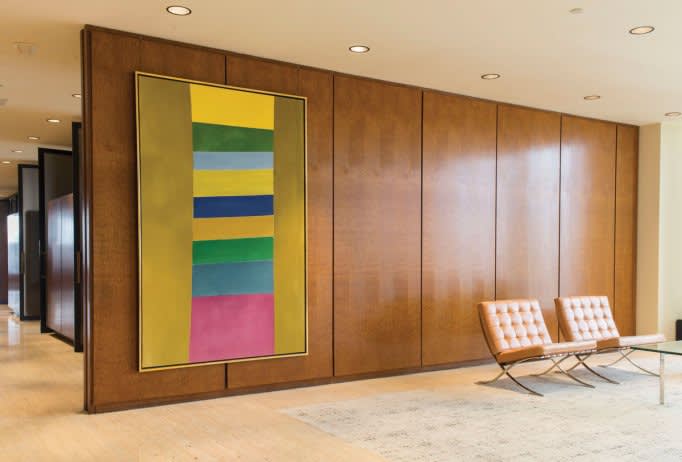 TD Bank’s Toronto headquarters, designed by Mies van der Rohe in 1967, showing the artwork "Rose" by Jack Bush, 1966. COURTESY TD BANK
TD Bank’s Toronto headquarters, designed by Mies van der Rohe in 1967, showing the artwork "Rose" by Jack Bush, 1966. COURTESY TD BANKCorporate Art Collections: Blending Art with Business Identity
What are corporate art collections and why do companies build them?In this article, we will explore the historical context of art in corporate spaces, the strategic role of art in corporate identity, the financial and cultural benefits of art as an investment, the symbiotic relationship between corporate collections and emerging artists, and the evolving future of art in the corporate world. Through this exploration, we aim to illuminate the intricate dance between art and business and how this relationship continues to redefine the boundaries of corporate identity and cultural patronage.
-
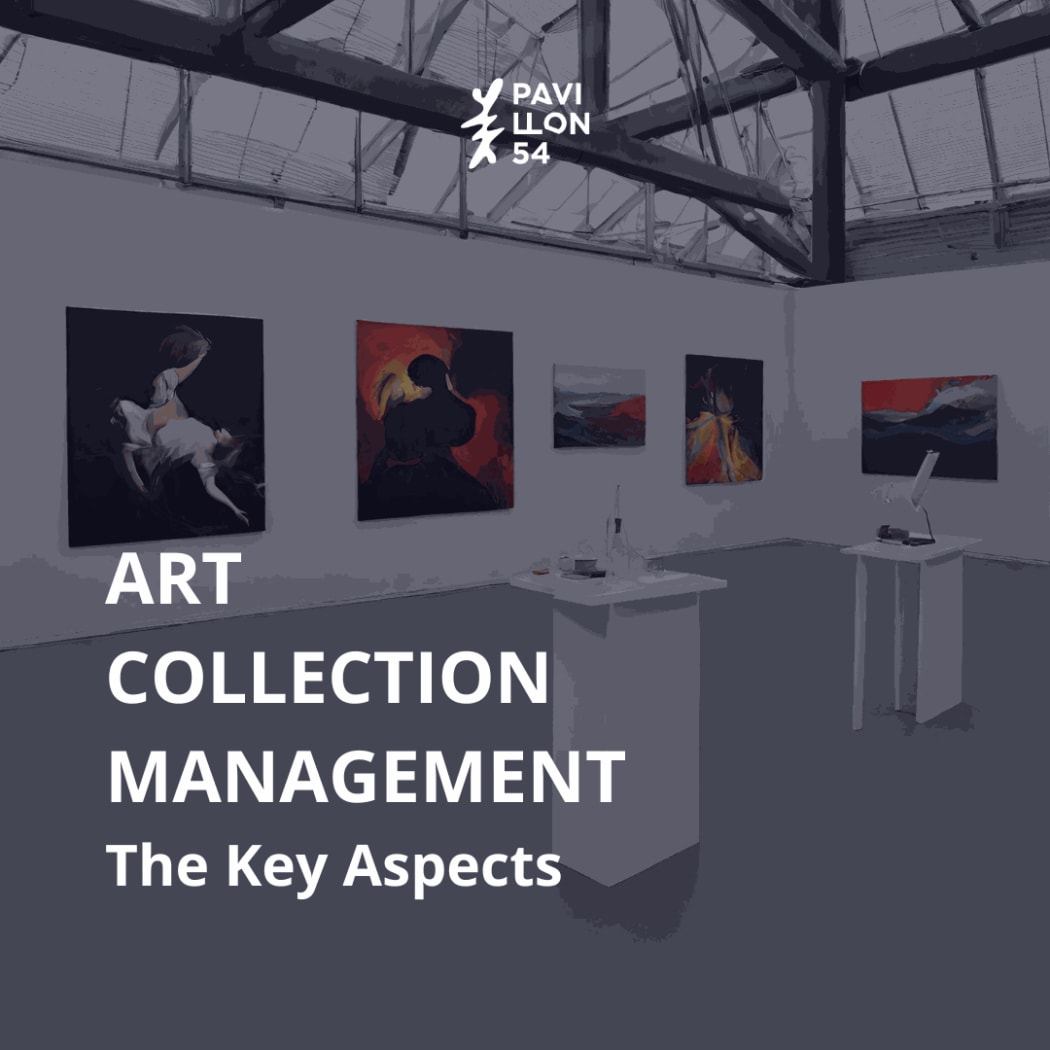 Art collection management is a multifaceted discipline that requires a combination of art expertise, organisational skills, and the use of specialised tools to ensure the longevity and cultural significance of the artworks within a collection. It is an important aspect of managing both private and public collections for a number of reasons. In this short article we explain the key aspects and reasons collection management is vital.
Art collection management is a multifaceted discipline that requires a combination of art expertise, organisational skills, and the use of specialised tools to ensure the longevity and cultural significance of the artworks within a collection. It is an important aspect of managing both private and public collections for a number of reasons. In this short article we explain the key aspects and reasons collection management is vital. -
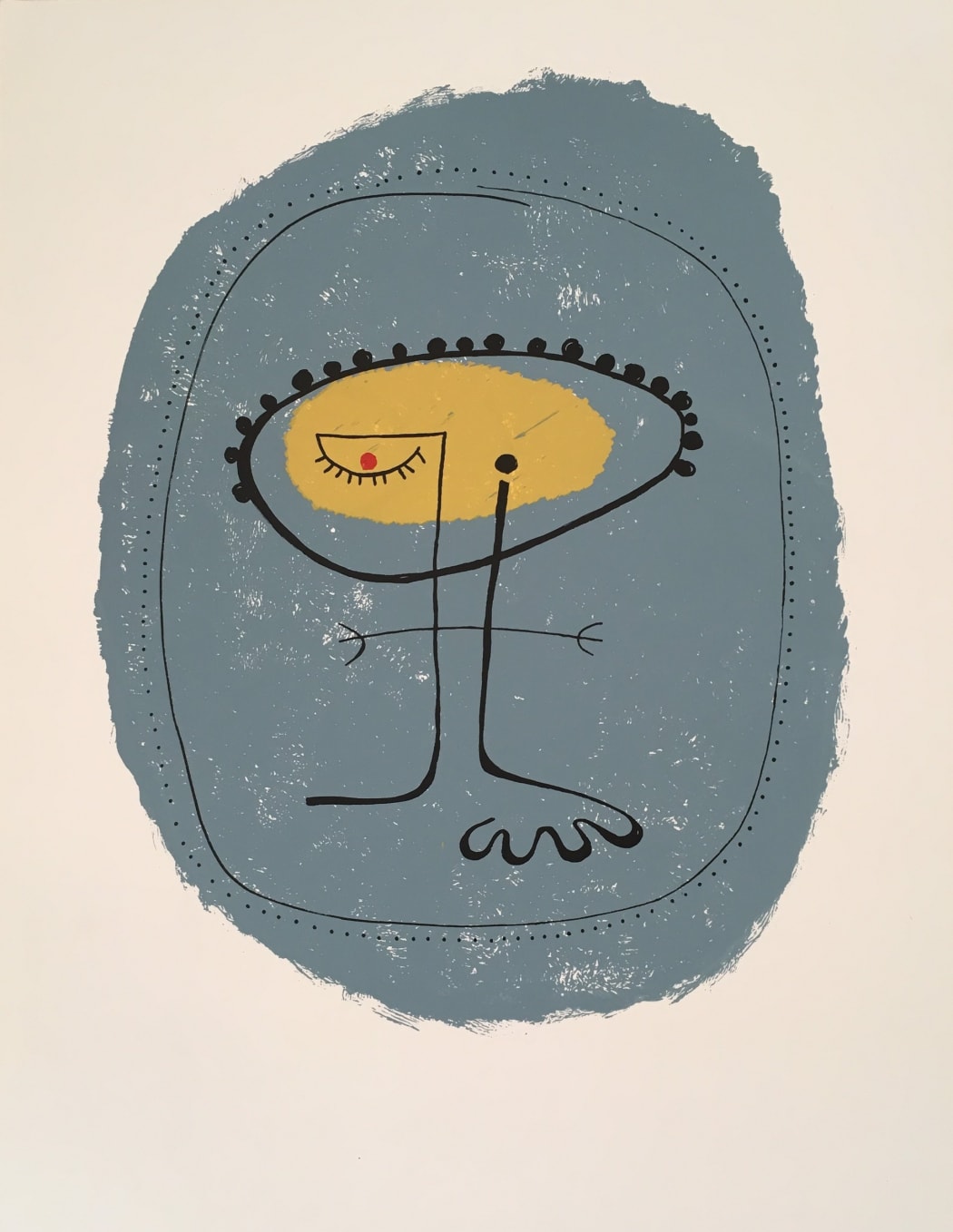 Victor Ekpuk The dancer, 2006 Lithograph on paper
Victor Ekpuk The dancer, 2006 Lithograph on paperAbstract African Art
A little more about abstraction in art from Africa and its diasporaThis article will explore the complexity involved in understanding abstract art from the continent and its diaspora and will give examples of artists who work well in this arena.
The influence of European colonialism played a significant role in shaping artistic perspectives in Africa and the diaspora. Traditional art forms, often characterised by figurative and symbolic representations, were sometimes marginalised in favour of Western artistic styles.
-
 Art X Lagos returned to The Federal Palace, Victoria Island, for its 8th edition to explore ideas, prompting reflection and mutual sharing, to guide our reimagination of the here and now differently. The theme for this year’s edition was ‘The Dialogue,’ which prompted negotiation beyond political and social dilemmas. The curation for this theme featured past and present artists whose story forms based on folklore and tales by moonlight, graphic stories, film shorts, and essays produced nuanced portrayals of real and imagined places and people.
Art X Lagos returned to The Federal Palace, Victoria Island, for its 8th edition to explore ideas, prompting reflection and mutual sharing, to guide our reimagination of the here and now differently. The theme for this year’s edition was ‘The Dialogue,’ which prompted negotiation beyond political and social dilemmas. The curation for this theme featured past and present artists whose story forms based on folklore and tales by moonlight, graphic stories, film shorts, and essays produced nuanced portrayals of real and imagined places and people. -
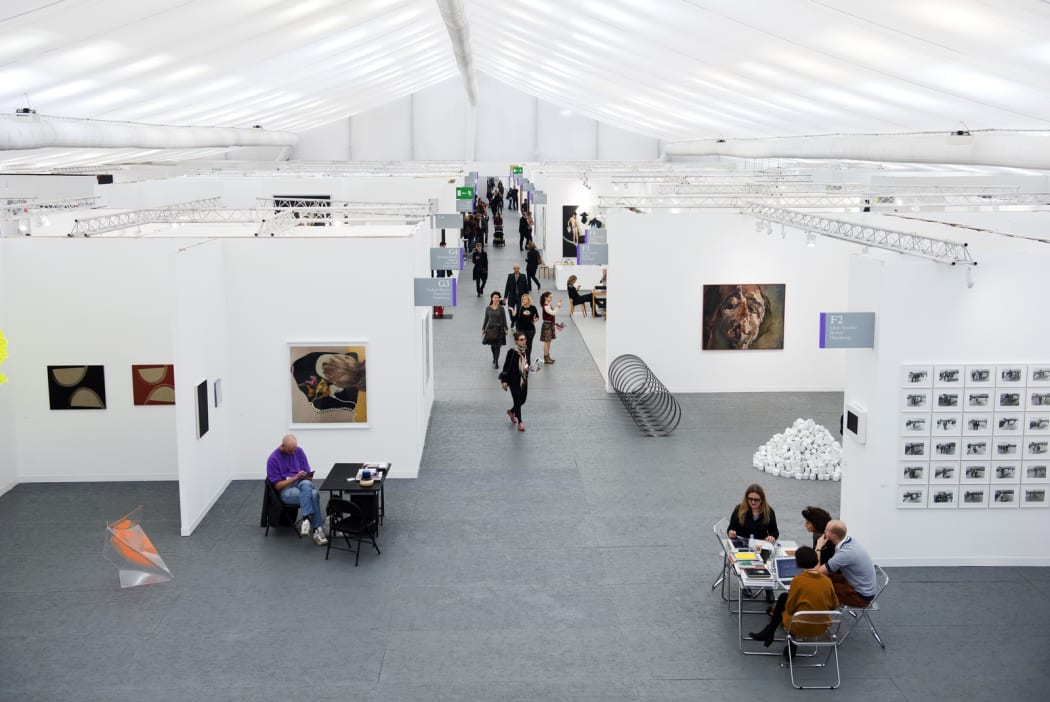 In the ever-evolving world of contemporary art, the latter part of the year 2023 promises to be vibrant, with exhibitions ongoing and visionary curatorship unceasing. As the art world gears up for a spectacular finale, we explore a curated selection of upcoming art fairs that will captivate aficionados, collectors, and enthusiasts alike. From London's iconic Somerset House to the sun-drenched shores of Miami Beach, and the heart of Paris, these art fairs bring together a rich tapestry of artistry and diverse art enthusiasts. Each event possesses its unique character, casting a spotlight on emerging talents, established masters, and the ideas that will shape the contemporary art landscape in the coming months.
In the ever-evolving world of contemporary art, the latter part of the year 2023 promises to be vibrant, with exhibitions ongoing and visionary curatorship unceasing. As the art world gears up for a spectacular finale, we explore a curated selection of upcoming art fairs that will captivate aficionados, collectors, and enthusiasts alike. From London's iconic Somerset House to the sun-drenched shores of Miami Beach, and the heart of Paris, these art fairs bring together a rich tapestry of artistry and diverse art enthusiasts. Each event possesses its unique character, casting a spotlight on emerging talents, established masters, and the ideas that will shape the contemporary art landscape in the coming months. -

In this series, collectors are invited to open their art collections to Pavillon 54 readers.
Collector Ugoma Ebilah is one of the unusual suspects in the ever-booming Lagos art scene in Nigeria. A corporate finance professional turned creative entrepreneur, Ugoma is known for her community-building efforts and dynamic taste-making. She is the founding director and chief curator at Bloom Art, a portfolio gallery and private art salon set in the heart of Victoria Island.
-
 The annual Art Basel and UBS Art Market Report is out. With pages and pages of well-researched insights on the global art market from the previous year, the report covers topics from NFTs and online sales to auctions, dealers and fairs. It’s dense and certainly doesn’t qualify as light reading so here at Pavillon54 we break down some relevant findings from this lengthy 2022 report.
The annual Art Basel and UBS Art Market Report is out. With pages and pages of well-researched insights on the global art market from the previous year, the report covers topics from NFTs and online sales to auctions, dealers and fairs. It’s dense and certainly doesn’t qualify as light reading so here at Pavillon54 we break down some relevant findings from this lengthy 2022 report. -

Joburg-based collector Liesle Barrath takes Pavillon54 on a walk through her private art collection. Housed in her leafy home, it is a cool and eclectic mix of works featuring heavy-hitting names such as Mmakgabo Helen Sebidi and Nandipha Mntambo together with street-art inspired works courtesy of artists Khaya Witbooi and Vusi Beauchamp. Walking through the space, Liesle recounts the story behind each of the purchases, what emotions the artworks stir within and as we stop to consider each work, it becomes clear that she collects from a gut feeling.
In this series, we invite collectors to open their art collections to Pavilion 54 readers.
-

Celebrating a decade of contemporary South African art, Investec Cape Town opened its doors for its tenth edition. From modest beginnings, it is now generally acknowledged as the largest international contemporary art fair in Africa. The fair focused on the concept of time — the theme was broad, appropriately so as time is all-encompassing of ideas about the past, present, and future as well as the ever-important concept of change that comes with time. The tenth-anniversary timing for this theme was also appropriate. The fair reached its ten-year height, boasting 25 000 visitors, 106 exhibitors from 18 different countries, and 337 artists; it was the fair's largest-ever edition.
To accompany this larger-than-ever, birthday-bash edition, were some spectacular highlights that are worth celebrating especially because this fair has much to teach other fairs on the continent.
-
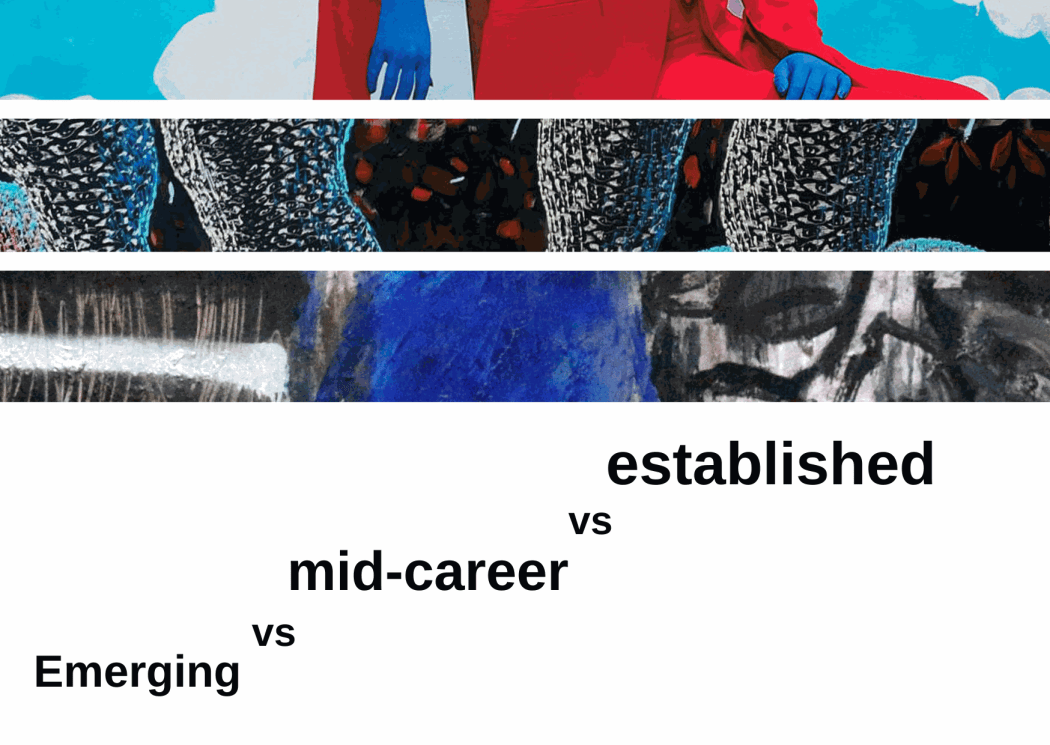
Building a strong art collection requires an understanding of the art ecosystem as well as the market before deciding on a strategy to build your own. Have you ever heard experts or gallerists referring to artists as emerging, mid-career or established and wondered what it all means? Are there specific criteria to differentiate them or is it all just subjective? And how does that influence the price or desirability of an artwork you consider buying?
Here we touch on the differences between the three main stages of an artist's career and their work, and how understanding this is useful in establishing value for collectors. These categories — emerging, mid-career and established artists — are used regularly by artists, gallerists and critics but these delineations can be a matter of contention.
-
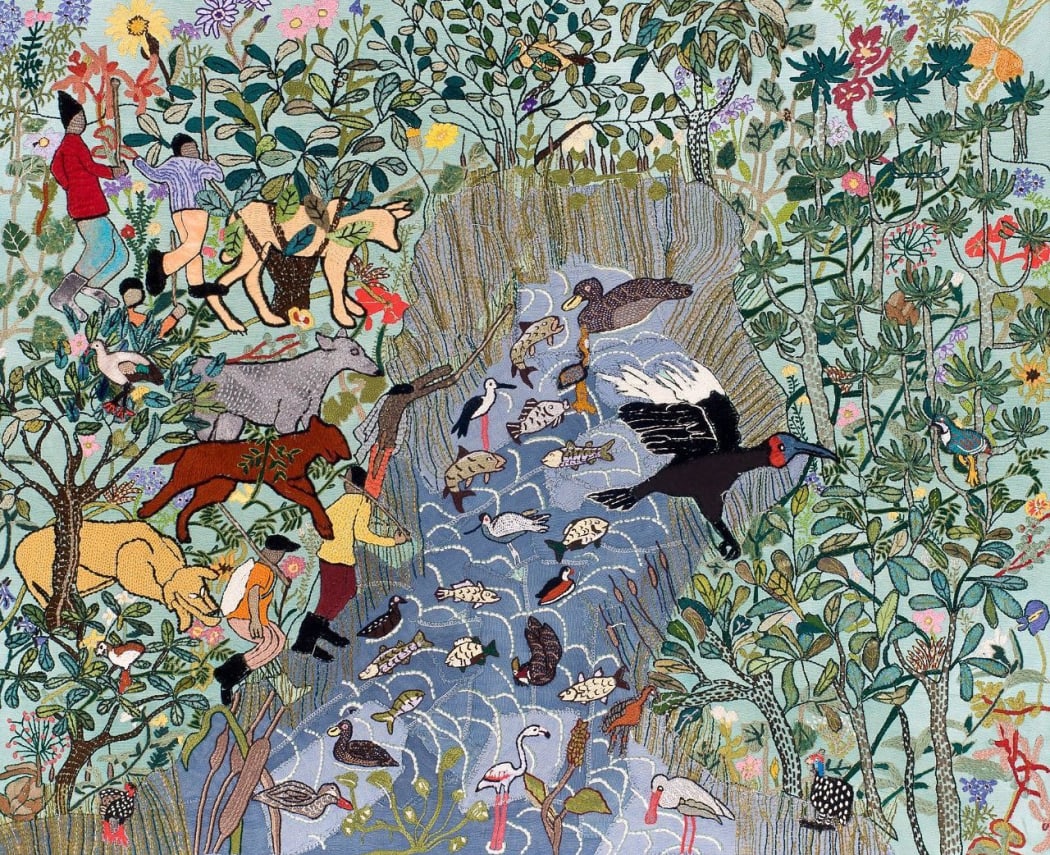
What is defined as textile art is art that uses varying materials and fibers to produce decorative, artistic objects. It’s one of the oldest forms of art in history and has played a part in practical and decorative man-made objects for hundreds of thousands of years. Across the African Continent, textile art has played a huge role in reflecting the individual cultures and styles of specific countries and areas.
Nowadays, many contemporary artists are weaving together a rich variety of textile art in new ways. This list, which is in no way complete, offers a taste of what contemporary artists working in the medium offer.
-
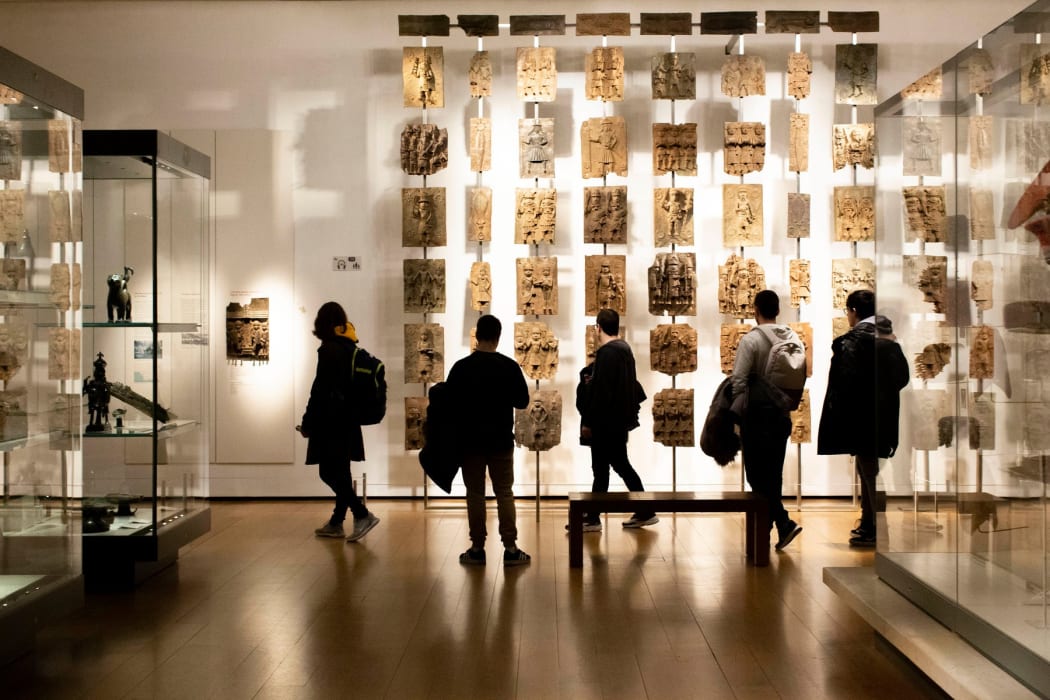
If you’ve been reading our art market coverage of the African Art Market in articles such as our African Art Market Report 2021 or our ‘Break down of the African Art Market,’ you’ll know that African art sales maintained healthy volume and growth last year. Despite the total restructuring of the global art market due to the COVID-19 pandemic, galleries and art organisations in Africa managed to stay afloat for the most part, and have made a vigorous comeback with art fairs, gallery shows and a growing collectorship on the continent adding to the market’s success. But how has the African art market fared so far in 2022? We provide the key insights from the first half of this year below.
-
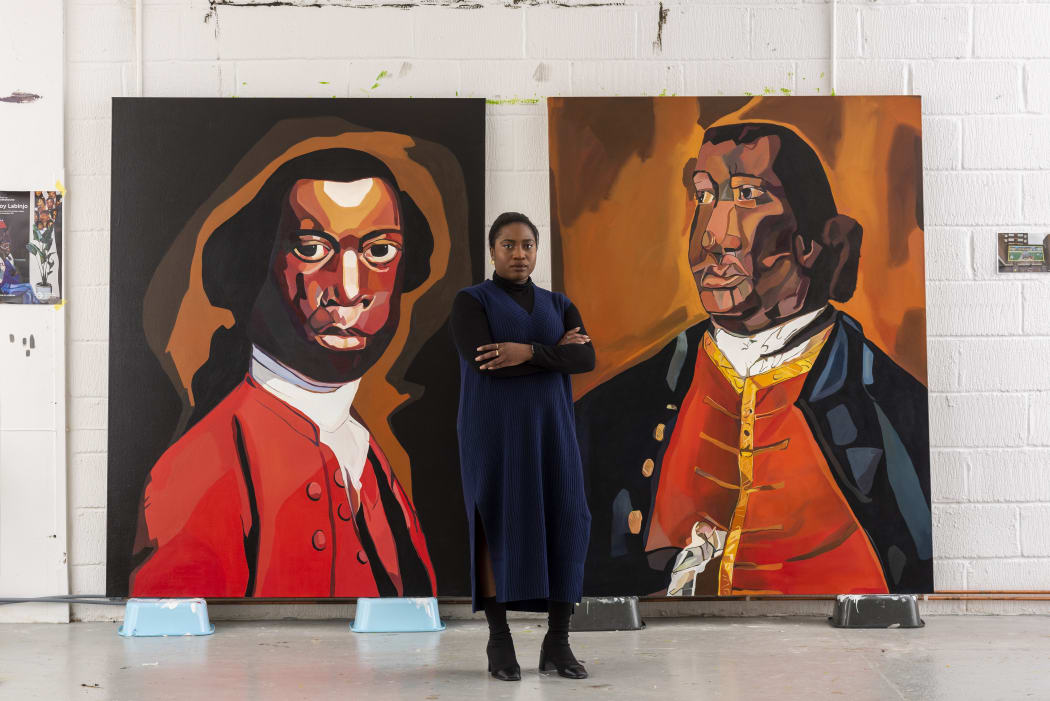 Lovers, collectors and dealers of African art have a new rising star to keep their eyes on: Joy Labinjo. The British-Nigerian artist, who paints large-scale figurative paintings, often of black individuals, has leapt to rapid success in recent years, known for her talent in capturing sensitive, independent, contemplative, and vulnerable people — sometimes all in one.
Lovers, collectors and dealers of African art have a new rising star to keep their eyes on: Joy Labinjo. The British-Nigerian artist, who paints large-scale figurative paintings, often of black individuals, has leapt to rapid success in recent years, known for her talent in capturing sensitive, independent, contemplative, and vulnerable people — sometimes all in one. -

Nigerian-American artist Victor Ekpuk has come to acclaim through his unique visual language, which abstracts the ancient Nigerian script Nsibidi and indigenous Uli art forms. By taking these codes and philosophies as the base for his artistic practice, Ekpuk creates his own symbolism that aims to decrypt the truths of the human condition, placing particular focus on the contemporary African diaspora. Through his paintings, drawings and sculptures, Ekpuk’s language is instantly recognisable, with strong use of intricate linework and bold colour bearing the hallmarks of this signature. Through deep research into the philosophy of Nsibidi script, which the artist studied during his Bachelor of Fine Art at Obafemi Awolowo University in Nigeria, Victor Ekpuk’s work borders drawing and writing, furthering the concept of art being an inherently communicative and story-telling medium.
-
 Oluwarantimi by Polly Alakija, public art project commissioned by Lagos Government. Photo @Tayo Adeoye
Oluwarantimi by Polly Alakija, public art project commissioned by Lagos Government. Photo @Tayo AdeoyeAs the second in our series of not-to-miss art destinations when scoping out the art scenes in Africa, we turn to Lagos, one of the leading art capitals on the continent. Lagos boasts a strong artistic tradition. When higher educational institutions were introduced into the country during the 1950s, Nigerian artists began to undermine traditional European-style painting by combining African artistic traditions in their practice, creating a distinct identity. Today, Nigeria hosts one of the largest art fairs on the continent and is home to numerous galleries and cultural institutions. The Pavillon 54 team recently had the privilege of visiting Nigeria and have compiled this list of must-see art spots in its capital city of Lagos.
-
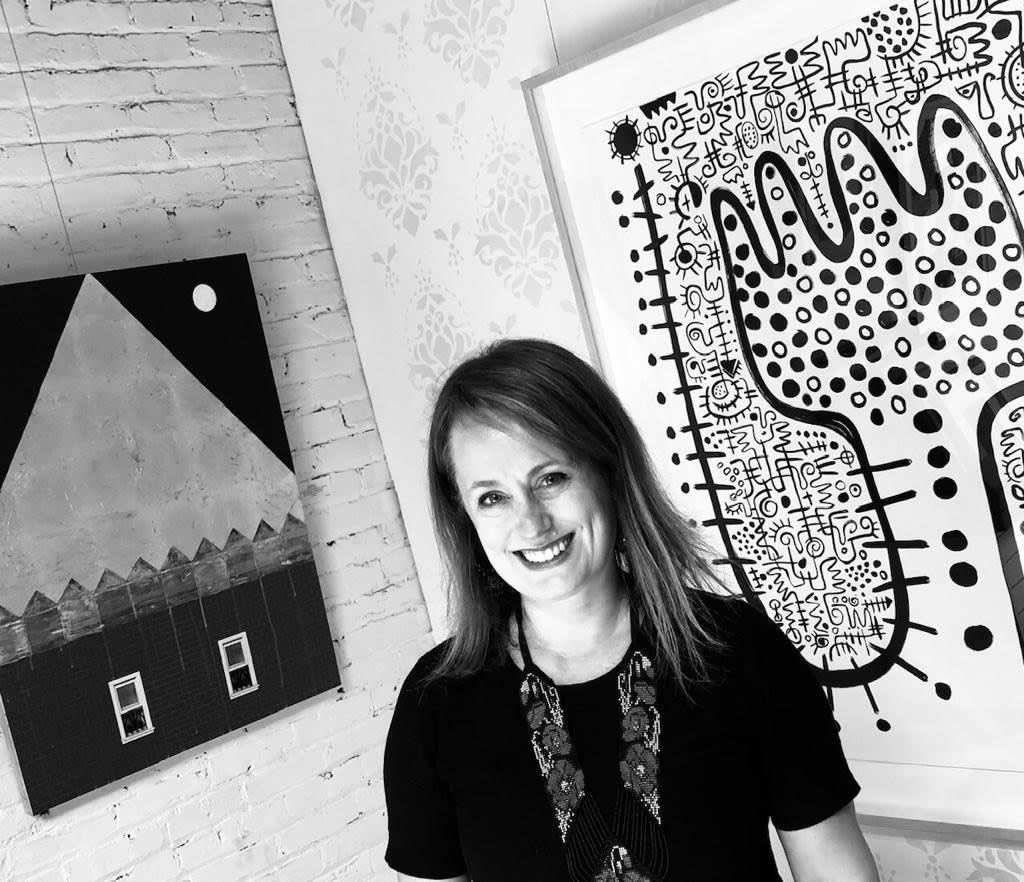 Amy Morton at Morton Fine Art gallery
Amy Morton at Morton Fine Art galleryAs the one-stop global digital platform and community for art from Africa and the Diaspora, Pavillon54 always seeks to enter fruitful partnerships with artists, curators, collectors, and galleries. It became only natural, then, that for the next step of our development, we partnered with some of the most exciting international galleries that specialise in contemporary African art and share our vision for the African art market.
-
 © Greatjoy in his studio, South-Africa
© Greatjoy in his studio, South-AfricaMeet Greatjoy: a “Contemporary expressionist”
Artists' Spotlight Series - Conversation with the artistPavillon 54 had the chance to have a chat with Greatjoy Ndlovu: born in 1993, Greatjoy is a Zimbabwean visual artist living and working in Johannesburg, South Africa. One of the most interesting emerging artists on the South African scene, Greatjoy dynamic paintings are enriched by expressive brush strokes, graphite-drawing and splashes of color. His subject matter is mostly focused on human beings: their bodies, their behaviour, and their emotions. During the past year, Greatjoy explored the impact of the pandemic on our society and created a series of works, displayed on Pavillon 54, focusing on subjects as love, affection and family.
-
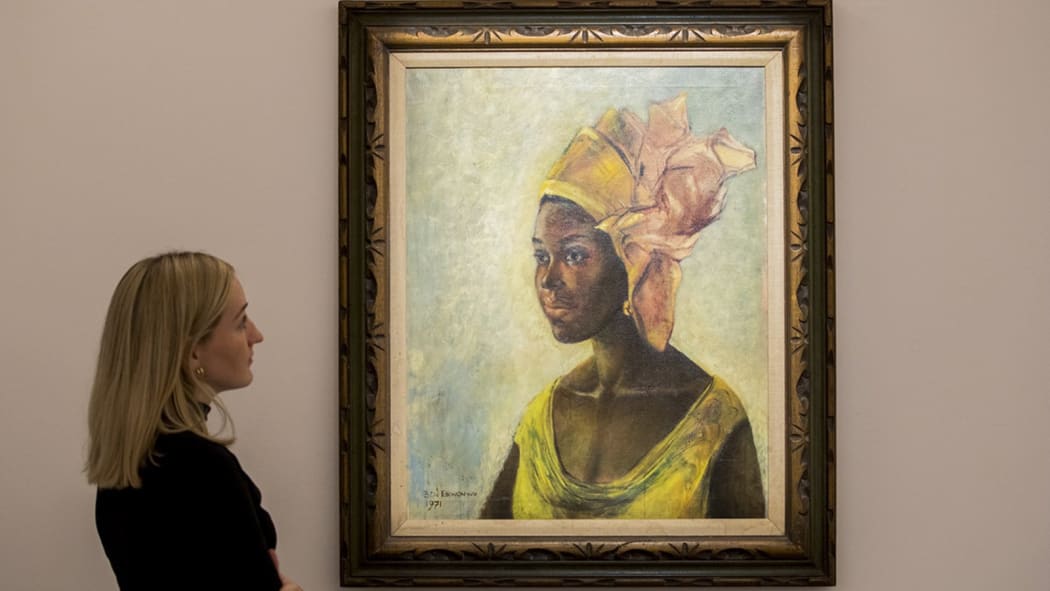 Ben Enwonwu's 'Christine' on view at Sotheby's on October 12, 2019, in London, England. Tristan Fewings/Getty Images for Sotheby's
Ben Enwonwu's 'Christine' on view at Sotheby's on October 12, 2019, in London, England. Tristan Fewings/Getty Images for Sotheby's7 Established Nigerian Artists You Should Know
Art scene in Nigeria - Country FocusTo navigate the history of art of a complex, multifaceted and multicultural continent as Africa, especially if you just got passionate about it, can seem like an overwhelming maze. But no worries, we are here to help you. Follow our series of “Artists you should know or watch” in each country, and you could soon almost sound like an expert!
In the past decade, Nigeria's art scene has gained independence and global recognition and has flourished, leading to a renewed interest in modern and contemporary art in the country. Here we list just 7 of Nigeria's most influential artists that one should know, this list is not exhaustive and could probably include many more artists. But we hope it will inspire you to research more about this lively and booming art scene!
-
 Ramesh Shukla's 50 Years United at Art Dubai 2021, Courtesy of Art Dubai.
Ramesh Shukla's 50 Years United at Art Dubai 2021, Courtesy of Art Dubai.Art world professionals and connoisseurs wait with bated breath for the annual Art Basel x UBS Art Market report each year. This report, one of the most comprehensive in the industry, provides a full assessment of the market’s performance of the previous year, allowing businesses to analyse the current state of the market, and plan accordingly for the years ahead.
But with such an in-depth document, which covers statistics from art dealer sales, auction house performance, art fairs, online sales and more, it can be time-consuming to read the full report and extract the most essential information. We’ve summarised the key takeaways from the Art Market Report 2021, and have also highlighted some of the key impacts on the African art market from the year 2020.
-
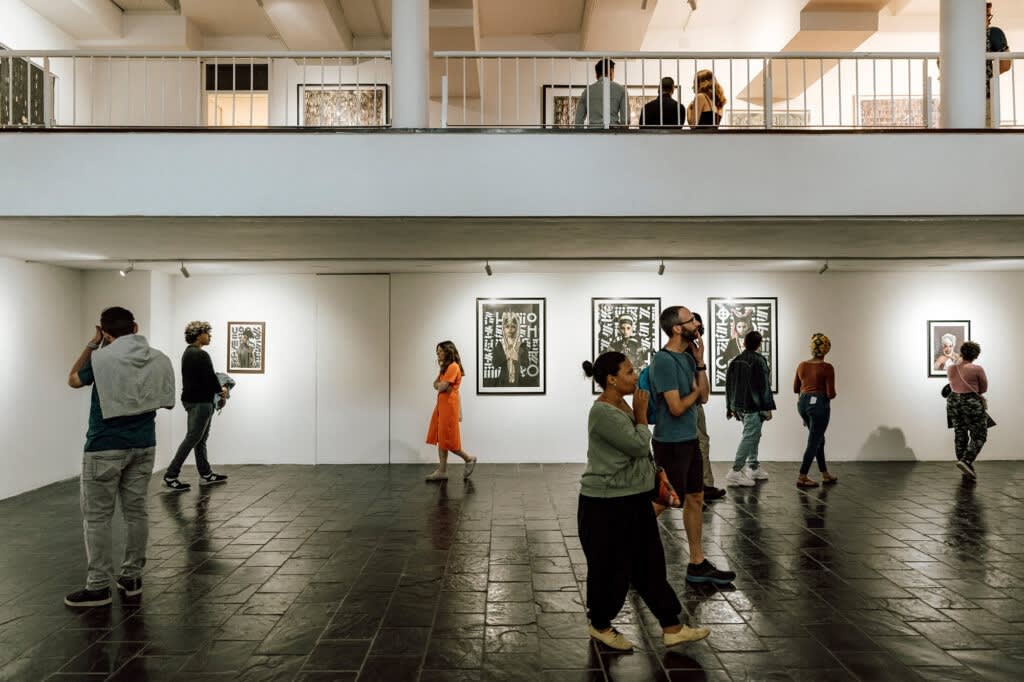 One of the galleries open on First Thursday, downtown Cape Town © travel.sapeople
One of the galleries open on First Thursday, downtown Cape Town © travel.sapeopleOne of Pavillon 54’s favourite things to do is to physically visit and scope out the artistic scene in various countries in Africa. This has been hard to achieve during the pandemic, however we fortunately managed to visit South Africa recently, and have already compiled a list of the 7 emerging artists to watch there. In this next instalment of our series on the art scene in South Africa, we highlight the 7 top art destinations in South Africa that every art lover has to experience.
-
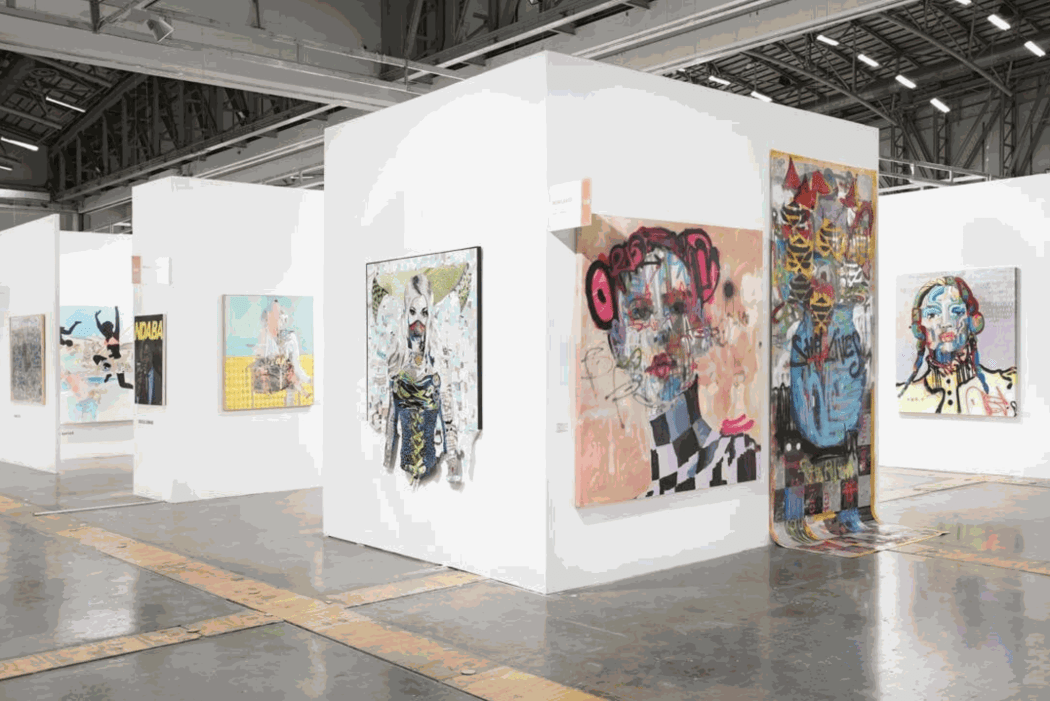 The Investec Cape Town Art Fair 2020
The Investec Cape Town Art Fair 2020 -
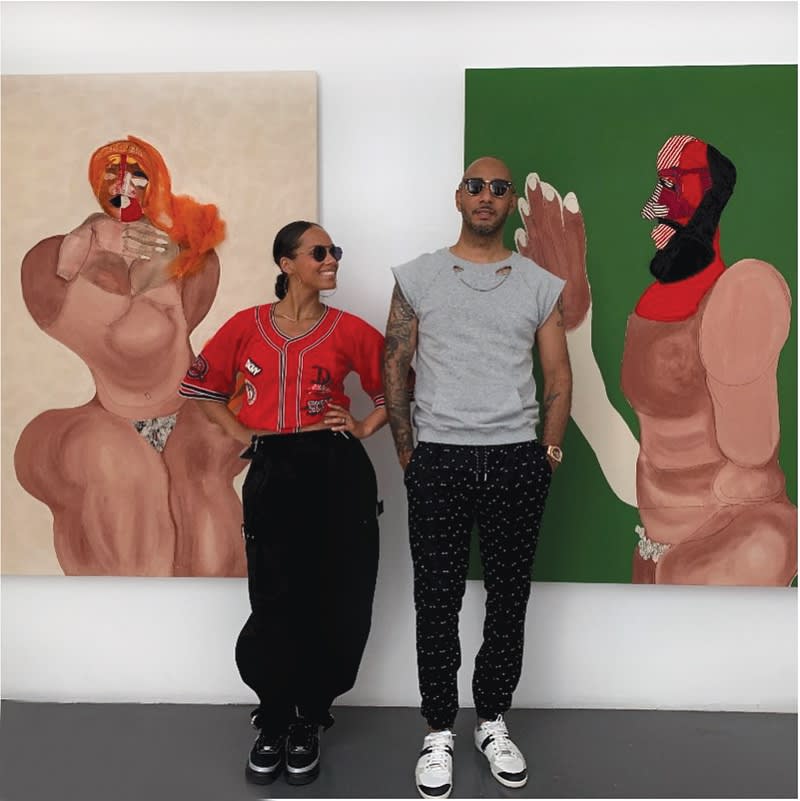 Collectors Alicia Keys and Kasseem “Swizz Beatz” Dean with paintings by Tschabalala Self © SWIZZ BEATZ
Collectors Alicia Keys and Kasseem “Swizz Beatz” Dean with paintings by Tschabalala Self © SWIZZ BEATZYou’ve done your research, selected choice artworks that match your collecting goals and tastes and have officially started your art collection. After you’ve acquired a certain number of paintings, sculptures, photographs, prints - whatever it may be - you may be asking yourself: what is the best way to care for all these artworks?
-
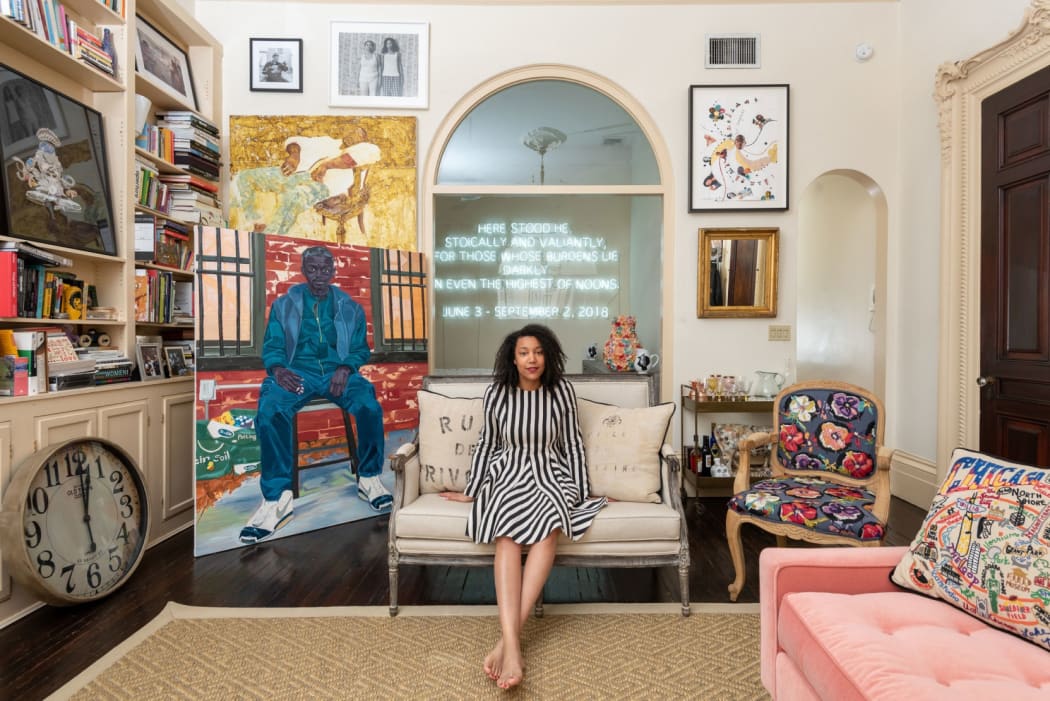 Victoria Rogers for CULTURED MAGAZINE [1] © CHRIS WAGGONER
Victoria Rogers for CULTURED MAGAZINE [1] © CHRIS WAGGONEROne of the biggest misconceptions about collecting art is that you must be very wealthy to do so. However, this is simply not the case, as there are plenty of emerging artists and art markets to invest in at affordable prices. Art from Africa and its diaspora is one such example, as its market is still developing rapidly. Collectors can obtain artworks of great quality and investment value at lower prices, and therefore not only contribute to the growth of an incredible movement of artists, but also add an artwork to their collections that is expected to grow in value.
But diving into the art world and the art market can be a mammoth task. What are the best ways to begin your forays into the art world without breaking the bank, and where can you start? We list some of our top tips for starting an art collection on a budget.
-
 The 99 Series, Part 7, 2013 © Aida Muluneh
The 99 Series, Part 7, 2013 © Aida MulunehThe term ‘print’ can often give the impression of a cheap, mass-produced printed piece of paper that doesn’t have much value. However, did you know that some of the most expensive prints by Edvard Munch and Pablo Picasso have exceeded a value of millions of pounds? This misunderstood medium has great value in the art market, but when you begin to collect photography or artist prints, there is essential information that should be kept in mind, in order to understand the long-term value of the artwork. There is a lot of specific terminology and factors that may be encountered when trying to acquire such a work, such as ‘limited edition’, an extension to an edition, the number of works in the series, and what this can mean for the value of these prints. Here at Pavillon54, we represent some incredible African photographers and work only with limited edition prints. So, what does this mean for a collector when acquiring a limited-edition print via Pavillon54?
-
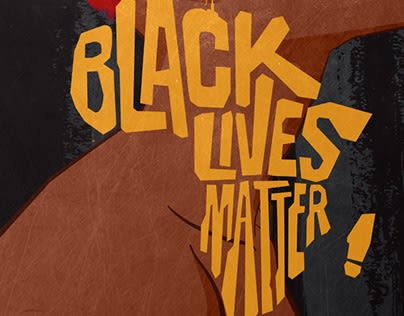 © Liam Booysen
© Liam BooysenThough the Black Lives Matter movement is by no means a new initiative, the outrage and consequent protests that ensued after the murder of George Floyd earlier this year have resulted in a common expectation for brands, museums, institutions, and other businesses to respond and act. Most likely, all of us have seen some kind of news article or social media post about this issue, but how has the Black Lives Matter movement affected the arts, and more specifically the African art scene?
-
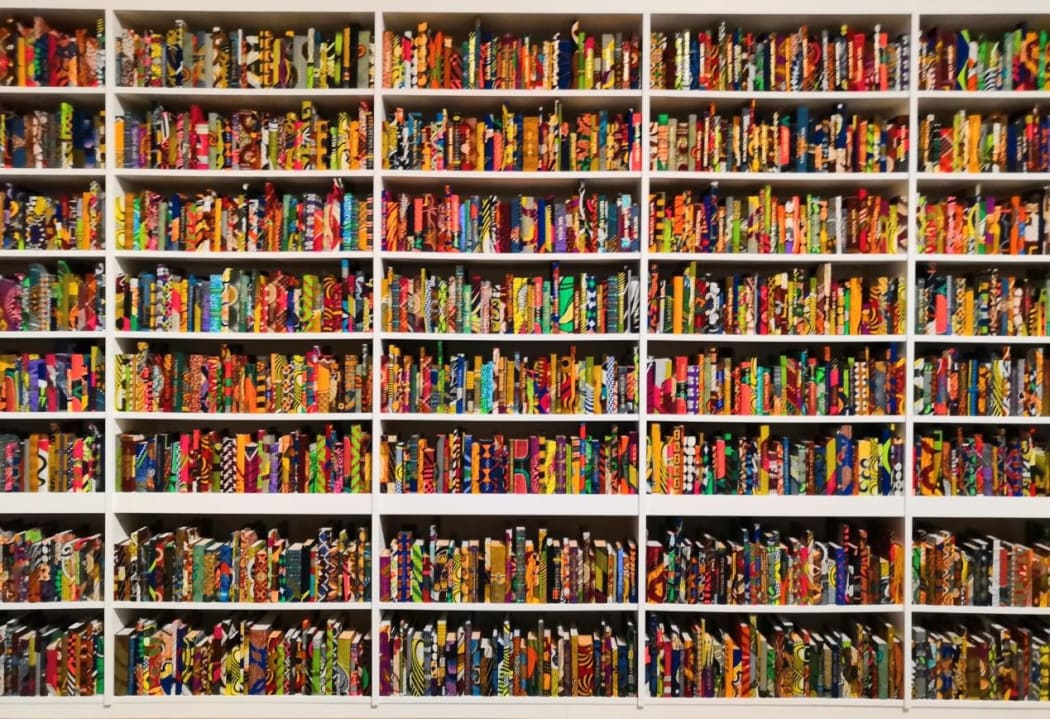 Yinka Shonibare CBE, The British Library 2014 (detail) | © Tate
Yinka Shonibare CBE, The British Library 2014 (detail) | © TateAs auction houses establish sales dedicated to African modern and contemporary art, galleries look to diversify their rosters of artists, and the African art market continues to grow, it is important to take note of which artworks and artists are performing well. This is especially true if you are hoping to make an investment in African art. Below, we have compiled the top 10 most expensive African artists to date, highlighting which works landed them the record-breaking position, and why.
-
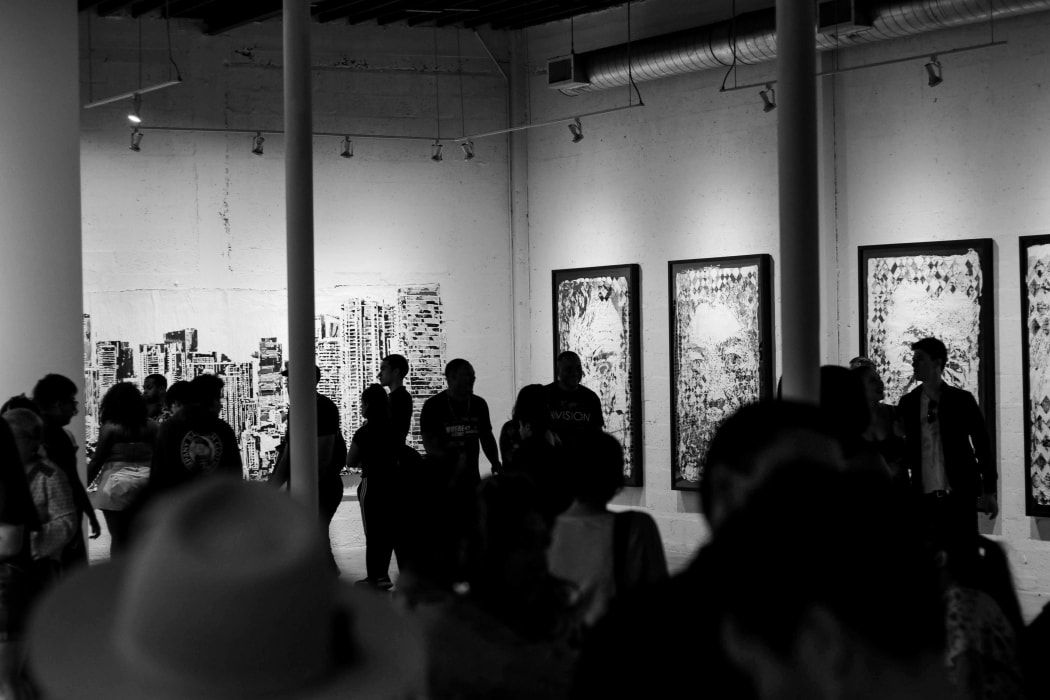
What to know when buying art?
5 Questions to Ask Yourself when Buying ArtThe possibilities of buying art grow ever more abundant. Indeed, these days, the dual-swoop of new, innovative digital art galleries and the increasing trend in the wealthy investing in art means that the art market is booming, particularly online. Among those using online platforms are wealthy millennials, many of whom are first-time buyers. If you count yourself among those who are interested in acquiring art for the first time, there are a few important questions to ask yourself before you make that big purchase. Below we’ve listed what to know when buying art, including some of the most important factors to consider.
-
 © Getty Images
© Getty ImagesIt is undeniable: online art sales continue to grow. According to the ‘Hiscox online art trade report 2018’, the amount of art bought online has shown consistent growth over the past five years. In addition to this, 79% of young art buyers (under the age of 35) expressed that they use social media, especially Instagram, to discover new artists, and 32% of buyers said that social media had a significant impact in their decision to purchase art. This consistent increase in online methods of scouting the art market demonstrates that purchasing art digitally is becoming more prolific. Artech start-ups pioneered the way for making means of buying and selling art online easier and more convenient than ever, however we are also seeing traditional art institutions incorporate online methods of buying art. Regardless of whether one prefers to go with young, innovating start-up companies, or massive auction houses with decades of legacy, therefore, it is irrefutable that art e-commerce is a crucial facet of the future of the art market. Here are three benefits of buying art online that have spurred on this revolution.
-
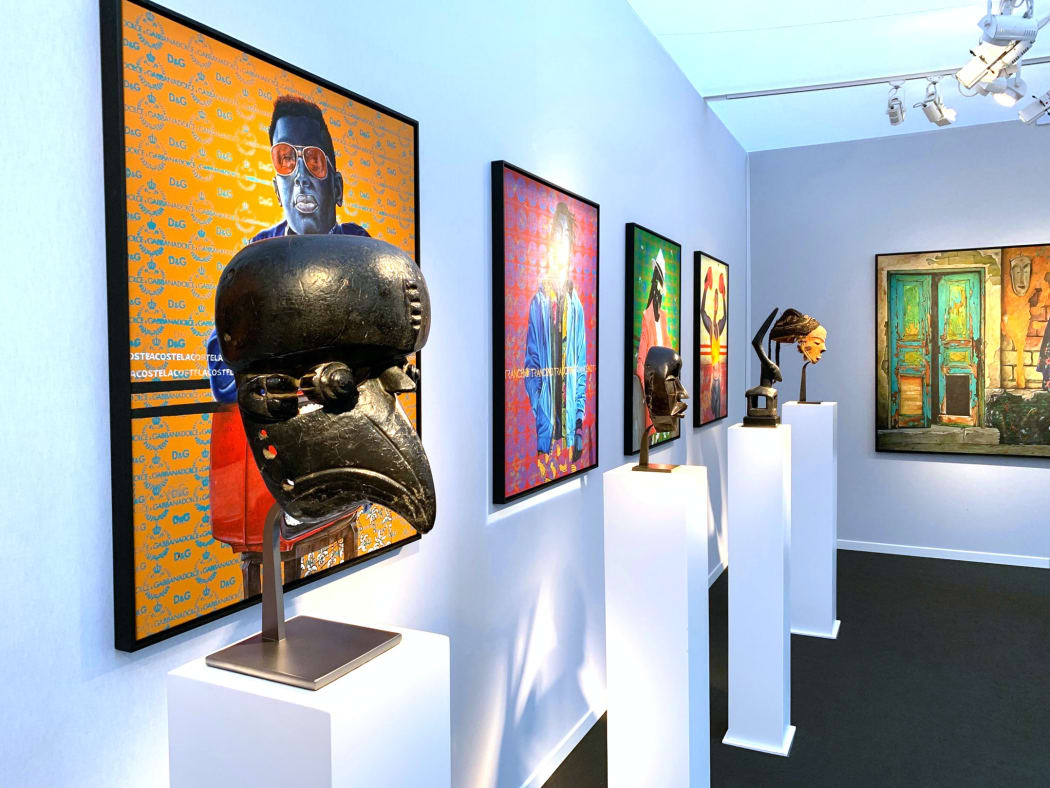 Didier Claes booth, AKAA Art Fair, Paris, November 2019
Didier Claes booth, AKAA Art Fair, Paris, November 2019For all the talk of the ‘African Art Boom’ in recent years, it isn’t always evident why is African contemporary art trending and what this boom entails, how it came to be, or what the future of the African art market is.
